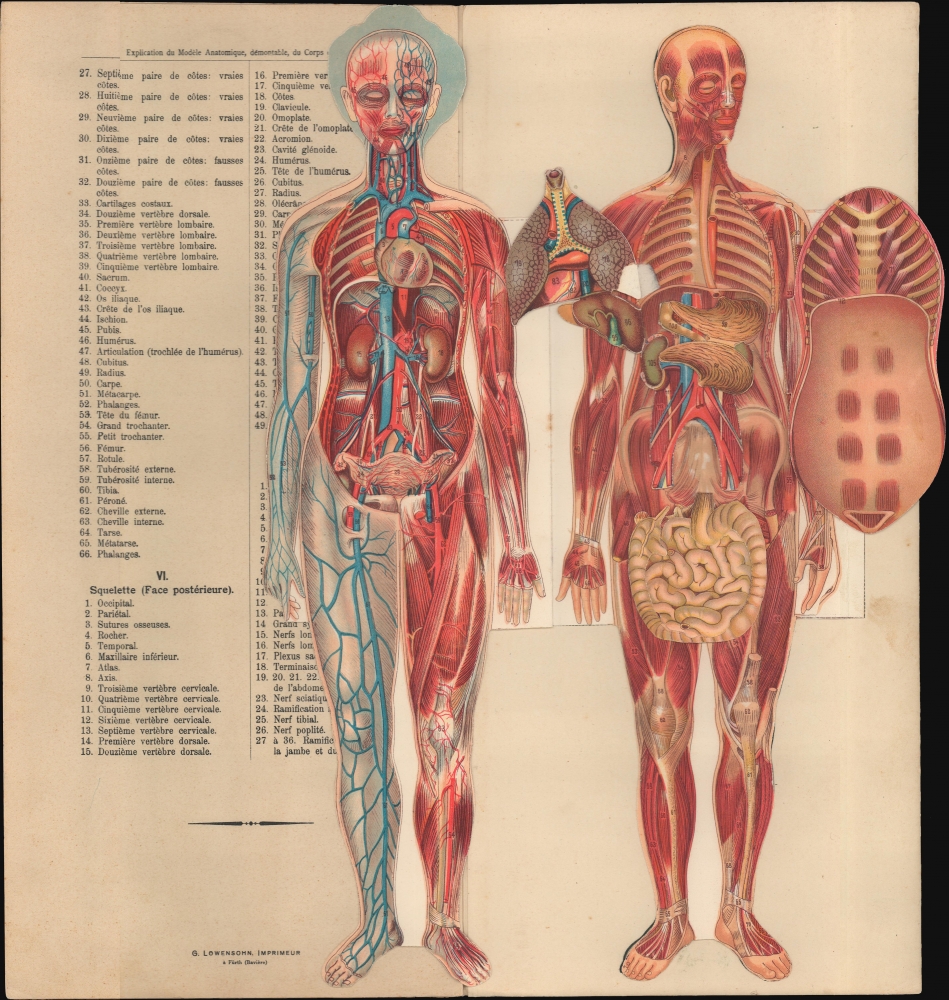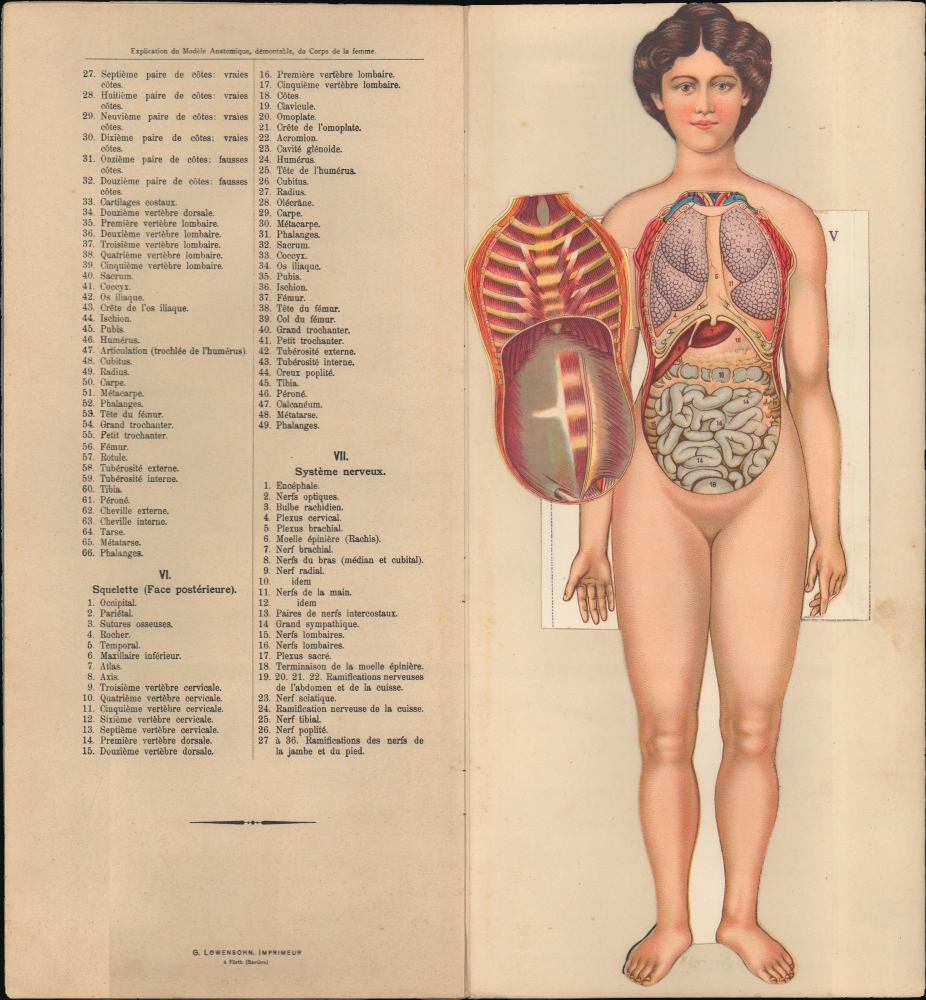Digital Image: 1900 Vigot Anatomical Model of a Woman
AnatomieFemme-vigot-1900_d
Title
1900 (undated) 16.6 x 7.75 in (42.164 x 19.685 cm)
Description
FOR THE ORIGINAL ANTIQUE MAP, WITH HISTORICAL ANALYSIS, CLICK HERE.
Digital Map Information
Geographicus maintains an archive of high-resolution rare map scans. We scan our maps at 300 DPI or higher, with newer images being 600 DPI, (either TIFF or JPEG, depending on when the scan was done) which is most cases in suitable for enlargement and printing.
Delivery
Once you purchase our digital scan service, you will receive a download link via email - usually within seconds. Digital orders are delivered as ZIP files, an industry standard file compression protocol that any computer should be able to unpack. Some of our files are very large, and can take some time to download. Most files are saved into your computer's 'Downloads' folder. All delivery is electronic. No physical product is shipped.
Credit and Scope of Use
You can use your digial image any way you want! Our digital images are unrestricted by copyright and can be used, modified, and published freely. The textual description that accompanies the original antique map is not included in the sale of digital images and remains protected by copyright. That said, we put significant care and effort into scanning and editing these maps, and we’d appreciate a credit when possible. Should you wish to credit us, please use the following credit line:
Courtesy of Geographicus Rare Antique Maps (http://www.geographicus.com).
How Large Can I Print?
In general, at 300 DPI, you should at least be able to double the size of the actual image, more so with our 600 DPI images. So, if the original was 10 x 12 inches, you can print at 20 x 24 inches, without quality loss. If your display requirements can accommodate some loss in image quality, you can make it even larger. That being said, no quality of scan will allow you to blow up at 10 x 12 inch map to wall size without significant quality loss. For more information, it is best consult a printer or reprographics specialist.
Refunds
If the high resolution image you ordered is unavailable, we will fully refund your purchase. Otherwise, digital images scans are a service, not a tangible product, and cannot be returned or refunded once the download link is used.
Cartographer S
Paul Vigot (1864 - 1937) was a French publisher. After having worked at the publishers Flammarion, J.-B. Baillère and Félix Alcan, he founded the Librairie Paul Vigot in 1890, later renamed Librairie Vigot frères, specializing in medical publications, including translation of medical texts in English. In 1900, they relocated to the rue de l'École-de-Médecine in Paris. After Paul Vigot's death, the firm passed on to his sons, and eventually to his grandchildren in 1971. In 1987, the firm was bought by Quillet, a subsidiary of Matra, but continues to operate under its own name and under the leadership of the descendants of Paul Vigot. More by this mapmaker...
Gerson Löwensohn (1817 - 1871) was a printer, publisher, and lithographer based in Fürth, Bavaria. His training and early work is obscure; he and his father, Isaac (1777 - 1884), may have undertaken copperplate printing in his youth before moving into lithography. He died at a relatively young age, leaving the family printing business in the hands of his wife Helene (1821 - 1914), his two sons Bernhard (1849 - 1910) and Theodore (1853 - 1931), and later a cousin, Albert Rosenfeld (1864 - 1916). At this point, the company began to grow quickly, successively moving to larger locations, purchasing more advanced machinery, and developing a specialty in movable picture books and children's books, including many in foreign languages designed for export (publishing costs were relatively low in Germany at the time). The firm passed on to another generation, Gustav Ernst (1883 – 1945) and Robert (1895 – 1945), both sons of Theodore. Unfortunately, as the family was Jewish, they were forced to sell their business in 1937 and it was reorganized as Pestalozzi-Verlag, which remained a prominent publisher of children's books in the postwar period, going through several mergers before being bought by the Danish company Egmont. Both Gustav and Robert died in the Holocaust after having fled Germany to other countries in Western Europe and being captured there by the Nazis. Learn More...














